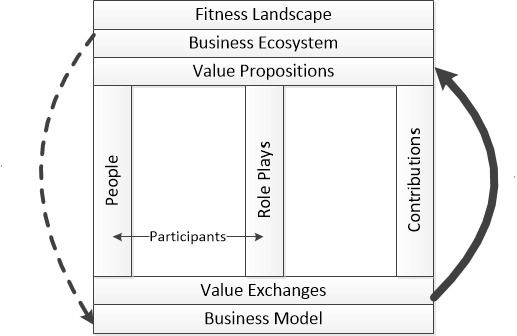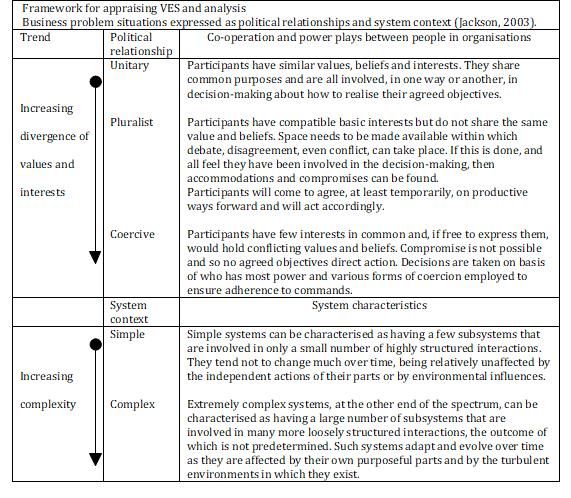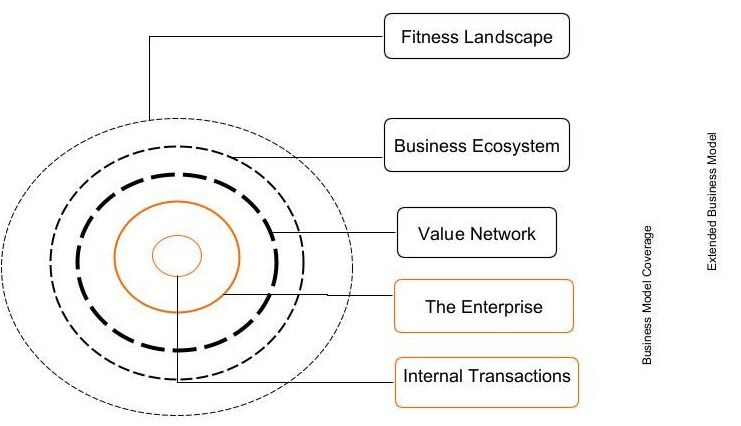VES as a systems approach (W4)

VES diagrams provide a powerful way of communicating how an organization really works and supplements the statutory requirements for narrative reporting. This, however, is just the beginning.
Once you have diagrammed the business model, its ecosystem or the internal transactions of a core Participant (see under HOW?), desirable changes can be identified, analysed, negotiated and introduced in order to meet known challenges or simply to discover new things you had not seen before.
Usefully, VES also lends itself to conducting detailed analyses of business models and ecosystems. It is also harmonious with a traditional view of systems analysis [1] from an engineering perspective which assumes:
• a complex grouping of human beings and mechanisms,
• a structure comprising subsystems,
• interaction between subsystem inputs and outputs,
• part of a hierarchy of systems,
• having an overall objective,
• designed such that it is capable of meeting its overall objective.
Further, to consolidate VES’ credentials as a systems approach, reference was made to the System of Systems Methodologies proposed by Michael Jackson as follows.

From experience within the VES community, VES qualifies as a dominant approach for addressing both “simple and complex” situations, with participants behaving in both “unitary and pluralist political relationships.” When acquainted with VES at a meeting with Professor Jackson at the Business School, Hull University, he commented that it was "interesting."
[1] Mainelli, M. & Harris, I., 2011. The Price of Fish - A new approach to wicked economics and better decisions. London: Nicholas Brealey Publishing.
[2] Jackson, M. C., 2003. Systems Thinking: Creative Holism for Managers. London: John Wiley and Sons Ltd.



